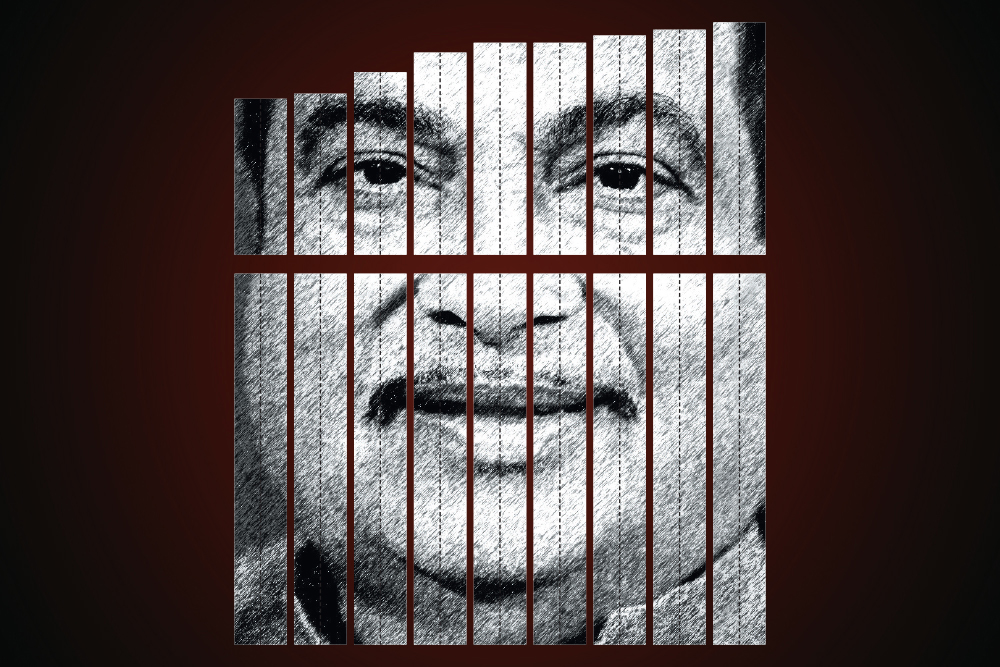The traditionally held image of India as an infrastructure-deficient country has undergone a transformation over the past one decade, thanks largely to one person: Nitin Gadkari, Union minister for road transport and highways.
“Without roads, water and power, we cannot have industry and capital, and, without that, there is no employment potential. No employment potential means that you cannot encourage growth,” Gadkari had said in an interview to Outlook Business in September this year.
Having taken charge of the Union Ministry of Road Transport and Highways (MoRTH) in 2014, Gadkari has overseen a rapid transformation of India’s roadways. Road transport is responsible for about 60% of total freight movement and 87% of total passenger traffic in India. In 2013–14, the country had an overall network of 48.85 lakh kilometres, of which 92,851 kilometres were national highways and expressways. By 2022–23, this increased to an overall network of 63.32 lakh kilometres, and national highways amounted to almost 1.45 lakh kilometres.
“Now, time has come when one can confidently say that the Indian highways sector is probably the most matured infrastructure sector [in the country] and has enough leverage to attract private capital and meet their requirement of generating reasonable return on investment,” says Sushi Shyamal, investment banking partner for infrastructure at EY India.
Gadkari believes that India’s road network will be on par with that of the US by next year.
The Steady Road to Power
Born and brought up in Nagpur, the headquarters of the Rashtriya Swayamsevak Sangh (RSS), Gadkari took to politics at a very young age, working with both the student organisation and the youth wing affiliated to the RSS. He was a member of the Maharashtra Legislative Council since 1989 until he became a Union minister in 2014. In Maharashtra, he served as the minister of public works between 1995 and 1999. This is when he supervised the work of the Mumbai-Pune Expressway, India’s first six-lane concrete expressway. He earned monikers such as “Mr Road Builder” and “Highway Man” for the first time during this stint.
Over the years, along with his reputation as an infrastructure visionary, his political sway within the BJP grew as well. After presiding over the BJP’s operations in Maharashtra for four years starting 2005, he took over as the party’s national president from 2009 until 2013.
In High Gear
After taking over MoRTH, Gadkari initiated a series of policy changes to switch India’s road expansion to the next gear. According to data released by the ministry earlier this year, the rate of construction of national highways was 12 kilometres per day in 2014–15. This increased to 36.5 kilometres per day by 2020–21. Gadkari has repeatedly said that the government’s aim is to bring this to 60 kilometres per day.
Along with the speed of construction, the innovative financing methods introduced by Gadkari’s ministry also had a significant impact on the country’s highways. The ministry has relied on a mix of public and private funds to finance mega road projects in a more efficient manner. Some of the funding models used by Gadkari include build-operate-transfer, hybrid annuity and toll-operate-transfer (ToT). Once, the minister even remarked in the parliament that he is the “father of toll tax” in India.
Gadkari has also been very enthusiastic about tapping into retail funding for highway construction via infrastructure investment trusts (InvITs). The National Highways Authority of India (NHAI), under the MoRTH, first launched InvIT in October 2021 to raise money from monetising road assets.
“Innovative financing structure in the form of InvITs has seen tremendous success; we have witnessed deployment of large amount of long-term patient capital into several private listed InvITs. Most of the large Canadian pension funds have significant exposure to such operating InvITs, capital flow has also been witnessed from the Middle East and Singapore,” points out Shyamal of EY India. He adds that there has been significant participation by Indian developers too in road development programmes of NHAI through its hybrid annuity model or by bidding for its monetisation programme through the ToT model.
Sustainable Drive
Gadkari is aware of the increasing discussions around sustainability. Currently, he is busy visualising electric highways that can cause a significant reduction in logistics costs for buses and trucks plying along the highways. He estimates that the savings can go up to 30% when compared to diesel-fuelled transport. Unlike many who talk about alternate fuels as a passing fad, Gadkari often walks the talk, or rather, drives the talk, as he is seen travelling to the Parliament in his hydrogen-powered car.
The minister’s conviction in his work is simple enough to follow—the highways that he is building today will lead India to a prosperous tomorrow.











